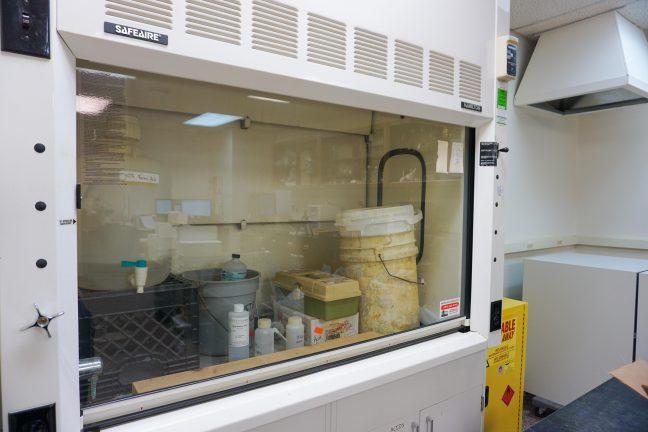The credit value system of science, technology, engineering or math degrees, otherwise known as STEM, grossly under-represents the amount of actual work that comes with each class when compared to non-STEM courses.
As a sophomore in the biomedical engineering program here at University of Wisconsin, my degree course load is not surprisingly riddled with math and science subjects.
So here I am, in the basement of Wendt Library, running on roughly an hour-and-a-half of sleep from the night before. I’m finding myself buried in studies for the umpteenth weeknight in a row in hopes of maybe getting my head above the sea of perpetual schoolwork and responsibilities in which I am undeniably drowning.
Call it what you will, but I am currently enrolled in six classes for 18 credits this semester. All except two are worth three credits, including Biomedical Engineering 200 for one measly credit.
The infamous biomedical engineering design courses: providing the undisputed best bang for your academic credit buck. These courses place aspiring students together on almost completely unstructured design teams in which they develop, fabricate and test an entirely new and innovative design all in one semester. But wait, there’s more! We students can get all this for the value of only one credit of our total needed to graduate — and I thought the Hooked app had good deals.
If it went unnoticed, I sprinkled just a hint of sarcasm over that. This course is definitely not the only STEM course where the amount of work put in is not equated in the amount of credits you get in return. My statics course last semester was worth three credits with weekly homework that averaged a few hours minimum to complete, coupled with three lectures a week and a discussion section that functioned more like a mini lab session.
I’m not trying to be lazy; I just have a beef with the fact that all the work we students put into these classes is worth the same amount of credit as the work required of non-STEM classes.
Math professor Savario Spagnolie discussed the differences between STEM and non-STEM workloads. “Methods of evaluation in humanities may be more time consuming, so assigning more graded out-of-class work might be infeasible for faculty in those departments,” Spagnolie said. “It may be harder to sift out true quality in humanities assignments, while STEM evaluations are like a fine-toothed comb: only the correct solution gets through.”
In context of personal experience, I am by no means trying to say that non-STEM classes are easier or any lesser than STEM classes, but the STEM classes I have taken required more week-to-week work than my non-STEM classes.
For example, my first semester of organic chemistry, Chemistry 343, had four midterm exams, and was worth three credits. On the other hand, my current three credit English class consists of one midterm exam and two papers of moderate length.
UW’s Courses and Academic Programs Policies and Guidelines webpage explicitly states academic units must follow the federal credit hour definition: “One hour (one instructional hour equals 50 minutes) of classroom or direct faculty instruction and a minimum of two hours of out of class student work each week.”
This means three credit classes should really only require about six hours of out-of-class work per week. Anyone who’s taken a three credit STEM course here knows this is rarely the case.
When asked about the differing workloads, professor John Nimis of the Department of African Languages and Literature said, “These days, humanities professors have very little institutional support, because higher administration is concerned with very countable questions like rankings, and very practical questions like an obvious connection to employability.”
Nimis said humanities work is often unrepeatable and uncountable. “This means that humanities professors have experienced a decay in their ability to enforce grades,” Nimis said. “In other words, it’s not that humanities professors demand less of students, but rather that they are less able to enforce their demands.”
As two professors from very different sides of campus seem to be hinting at, the difference in workloads just comes with the territory. Different qualities of the students’ work are being evaluated, inevitably leading to different workloads.
STEM classes should be on a separate scale because, as the two professors stated, the workload is not comparable.
I don’t know, maybe UW will eventually weigh STEM courses more realistically based on the amount of work associated with them, but I’m not going to hold my breath. I guess my message is to all those who don’t already know what I found out this semester: Don’t underestimate the effort STEM classes require. As for me, I’ll be spending most of my nights in the library, trying to keep my head above water.
Phil Michaelson ([email protected]) is majoring in biomedical engineering.














